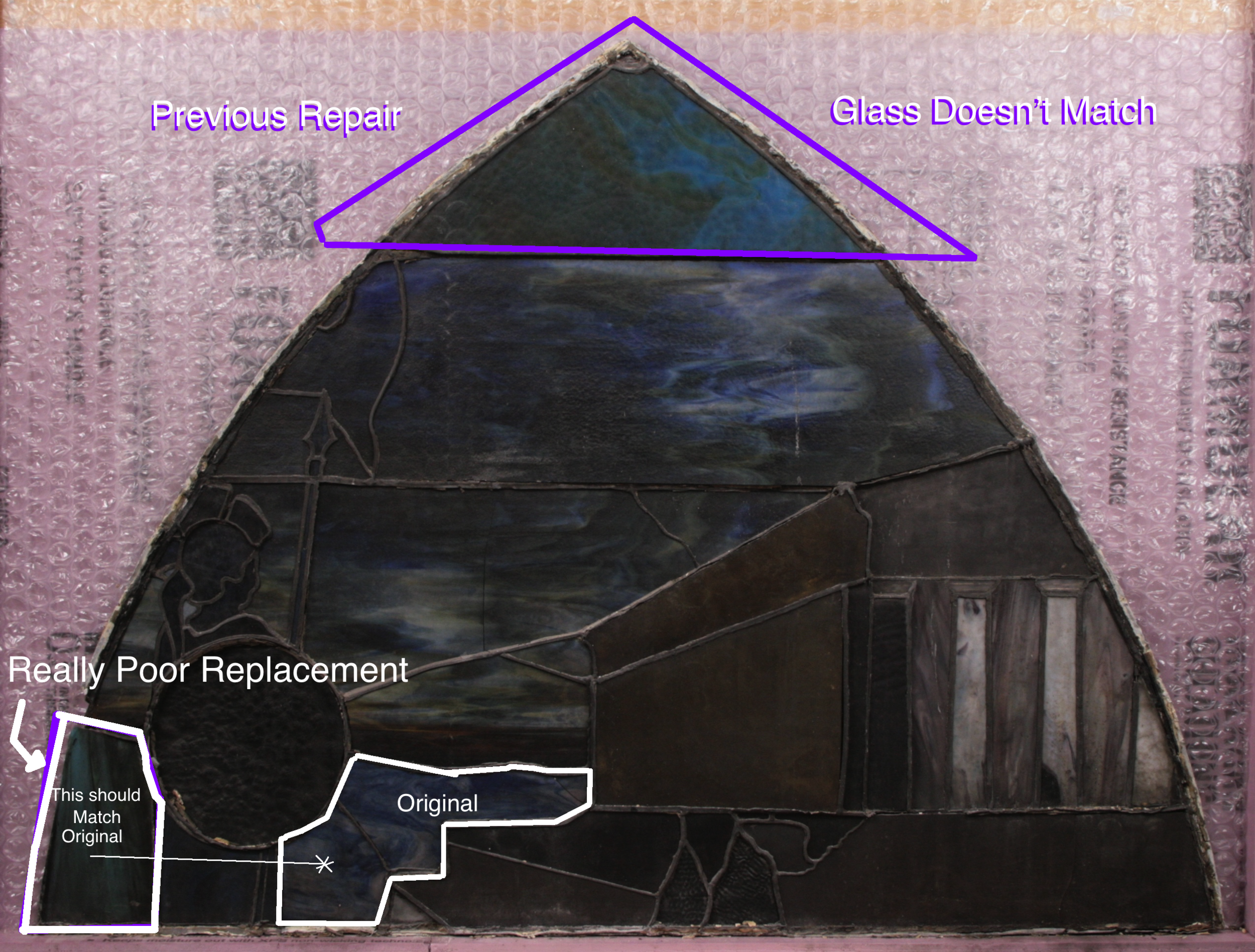Among the many unique features of Second Presbyterian Church are its 10 highly distinctive “crown chandeliers,” which are hung from angel brackets high above the south and north balconies. Each of the Arts & Crafts-style chandeliers feature a crown studded by 10 bare light bulbs framed by angel wings. The crown is topped by ten tall finials (or candle tubes) with glass shaded bulbs. The chandeliers are suspended from a decorative iron chain strung with three additional light fixtures. As with most of the church’s distinctive lighting fixtures, the crown chandeliers were designed by architect Howard Van Doren Shaw in 1901, in collaboration with pioneer lighting designer Willy H. Lau.
Last year, thanks to a grant from the Richard H. Driehaus Foundation, Friends of Historic Second Church was able to remove one of the chandeliers to see if it was possible to easily rewire and restore the 120-year old fixtures. Rewiring of the church’s many original light fixtures has been a priority of Friends, given the threat that electrical fires have posed to other historic churches. The success of that chandelier pilot project (see Spring 2022 issue of The Herald) convinced the Richard H. Driehaus Foundation to fund a complete restoration and rewiring of the church’s other nine crown chandeliers.
In January, Gilco Scaffolding Co. erected a 35- foot-tall scaffold atop the steel-framed south balcony. The multi-tiered scaffold enabled the electrical contractor, B&Z Electric, to carefully detach and lower the five south chandeliers to the church floor, where they were collected by Archistoric Products for in-studio restoration, including cleaning, repair, and rewiring. With the crown chandeliers removed, B&Z Electric then replaced the cloth-covered 1901-era wiring connecting all five chandeliers with new wiring, as well as an expanded electrical panel that will provide better efficiencies and improved fire safety. Fortunately, the old wiring had been housed in steel conduit, which has made replacement much easier.
In early February, while the chandeliers were being restored, Parma Conservation took advantage of the still-extant scaffolding to carefully clean and repair the five plaster angel brackets that support the chandeliers. (Parma was the firm responsible for last year’s cleaning and restoration of Frederic Clay Bartlett’s “Tree of Life” mural, which dominates the front wall of the sanctuary; see Fall 2022 issue of The Herald.)
One of the unexpected discoveries of the angel bracket restoration effort is that each of the angels, which are situated just below the church’s rose-colored clerestory windows, actually feature different colors of tunic, including yellow, green, blue, and rose. These vivid colors had not been visible for nearly a century due to accumulated dirt and soot. After the restored and rewired chandeliers were reinstalled in late-February, Gilco took down the south balcony scaffolding and reerected it in the north balcony, so that the restoration and rewiring of its crown chandeliers—and angel brackets—can be completed, hopefully by Easter Sunday. Once the crown chandelier project has been completed, our electrical attention will turn to rewiring of the remaining under-balcony light fixtures, as well as the rectilinear chandelier in the church narthex (entry lobby).
Many thanks to the Richard H. Driehaus Foundation, as well as to the four companies that assisted in this complex restoration effort.
Photo credit: Thomas Melvin



































